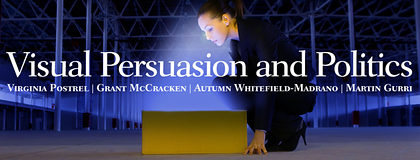
About this Issue
Sure, seeing is believing. But should it be? Why do people seem to find images so persuasive, while facts, figures, and logical arguments seemingly lag behind? Is something wrong with us?
We all must admit that sometimes visual persuaison does seem to go horribly awry, as when Nazi propaganda stirred one of the most well-educated and purportedly cultured nations on the planet to acts of unspeakable barbarism. But was the image to blame? If so, what about the ideas behind it? How do they relate to one another? It’s tempting to try to remove the arresting image from our politics entirely. Can we not have a wholly reasoned debate, from which style and all of the lower, more gut-level responses are banshed?
Lead essayist Virginia Postrel says that this would be a mistake - a dead end no matter what our political beliefs may be. She calls for a multi-level politics, in which facts and emotion both play a role, and in which the visual is a tool to be deployed like any other. Responding to her about the promise and perils of visual persuasion will be a trio of thoughtful cultural and political commentators: Grant McCracken, Autumn Whitefield-Madrano, and Martin Gurri. We also welcome your comments throughout the month, as the participants discuss with one another.
Lead Essay
No Fireworks on the Fourth of July?
In an ideal world, political discourse would consist only of logical arguments backed by empirical evidence. Visual persuasion would have no place.
There would be no fireworks on the Fourth of July; no pictures of the president speaking from the Oval Office or grinning at children or greeting soldiers or reaching over the sneeze guard at Chipotle; no “Morning in America” or “Daisy” commercials; no “Hope” or “We Can Do It” posters; no peace signs or Vs for victory or Black Power salutes; no news photos of gay newlyweds kissing or crowds celebrating atop a crumbling Berlin wall or naturalized citizens waving little flags; no shots of napalmed girls running in terror or the Twin Towers aflame; no Migrant Mother or dreamy Che Guevara; no political cartoons, Internet memes, or Guy Fawkes masks; no “shining city on a hill” or “bridge to the future”; no Liberty Leading the People or Guernica or Washington Crossing the Delaware; no Statue of Liberty.
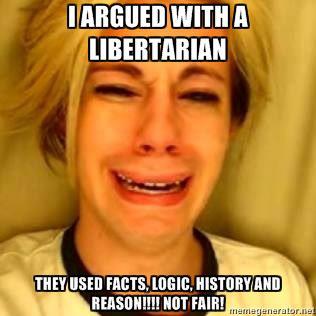
In this deliberative utopia, politics would be entirely rational, with no place for emotion and the propagandistic pictures that carry it. And we would all be better off.
At least that’s what a lot of smart people imagine.
It’s an understandable belief. Persuasive images are dangerous. They can obscure the real ramifications of political actions. Their meanings are imprecise and subject to interpretation. They cannot establish cause and effect or outline a coherent policy. They leave out crucial facts and unseen consequences. They reduce real people to stereotypes and caricatures. They oversimplify complicated situations. They can fuel moral panics, hysteria, and hate. They can lead to rash decisions. Their visceral power threatens to override our reason.
Yet images are so ubiquitous they’ve been called “the lingua franca of politics.”
We can no more escape them than we can shed the human characteristics that make visual rhetoric effective. Whether conjured with words or presented in 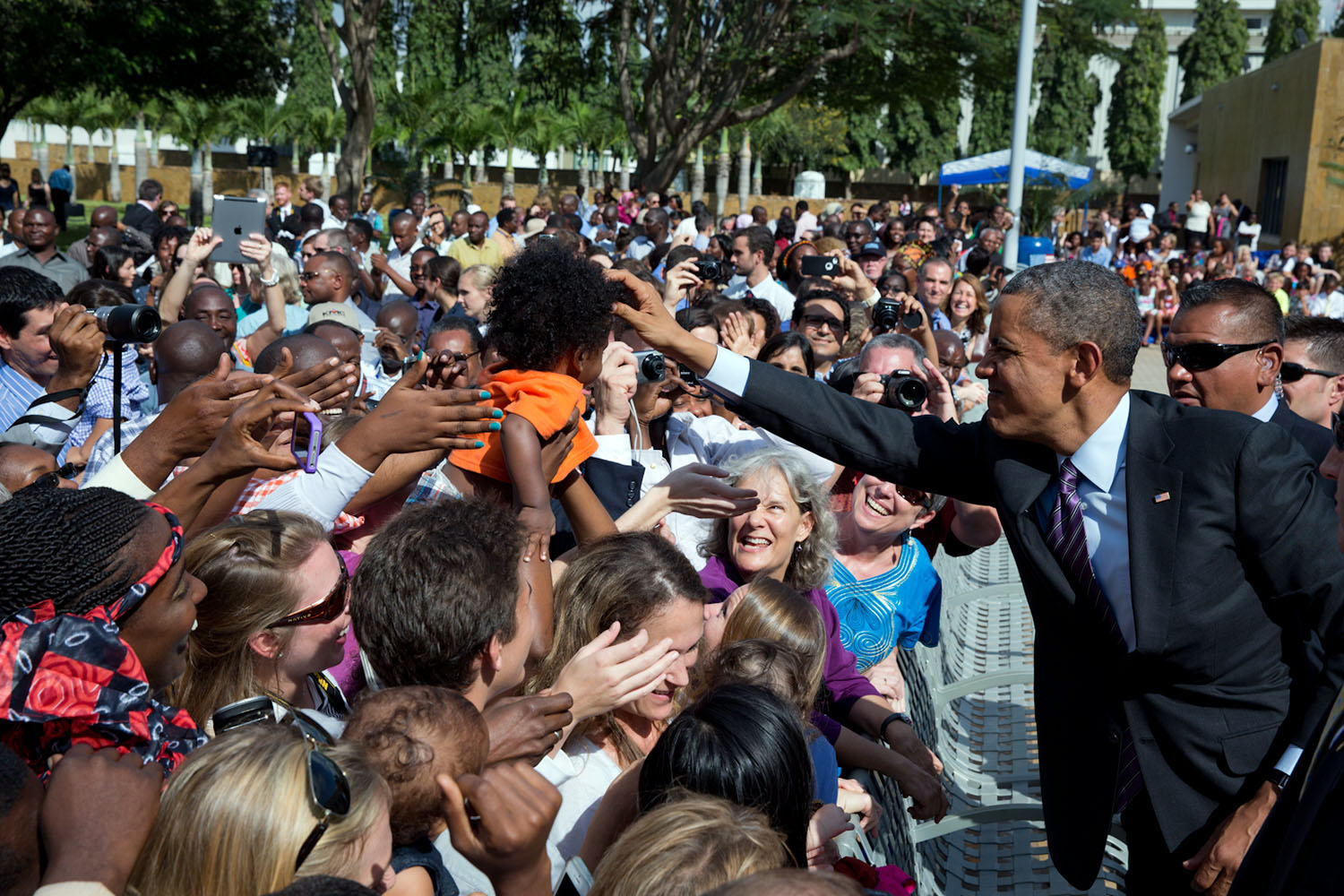 pigments or pixels, images speak to our social, sensory, and emotional natures. Those aspects of human nature aren’t going to disappear just because intelligent, articulate people try to ignore or suppress them. Instead of dismissing, neglecting, or condemning the power of images, therefore, it makes sense to try to understand how they work and what different forms of visual persuasion might tell us about the relation between political audiences and those who seek to influence them.
pigments or pixels, images speak to our social, sensory, and emotional natures. Those aspects of human nature aren’t going to disappear just because intelligent, articulate people try to ignore or suppress them. Instead of dismissing, neglecting, or condemning the power of images, therefore, it makes sense to try to understand how they work and what different forms of visual persuasion might tell us about the relation between political audiences and those who seek to influence them.
Consider, to begin with, the limitations of the rational ideal. Reasoned political discourse is persuasive when it connects arguments to the audience’s pre-rational (which is not the same as irrational) commitments and desires, addressing the meanings through which we define our lives. People do not get argued into aspiring to be good parents, ingenious inventors, environmental stewards, creative artists, successful entrepreneurs, or faithful Christians. Debate does not make us see ourselves as compassionate, independent, courageous, or smart. It does not make us identify as female or black or Jewish or the children of immigrants. It does not make us long for prosperity, freedom, equality, or security. Such values and identities emerge from temperament and experience, psychology and culture. Rational deliberation can neither establish nor abolish them. It can only explain why certain actions would express or further those values and identities, or why alternative policies would undermine them.
Imagery, by contrast, reaches the emotional centers of the brain before it registers cognitively (assuming it ever does). By moving our emotions and giving form to our hopes and fears, visual rhetoric thus has the potential to influence how we imagine ourselves.
It offers what Grant McCracken, in a discussion of commercial advertising, calls “symbolic resources, new ideas and better concrete versions of old ideas” through which we come to define ourselves and our social groups. Political imagery can turn issues into themes, establishing an emotional bridge between our evolving identities and specific actions, such as voting for a particular candidate or supporting a particular law. It can also heighten the salience of some concerns—crime, say, or women’s rights or environmental protection—so that we decide our political allegiances according to those, rather than competing, less effectively represented issues.
Visual persuasion, however, is not a single phenomenon. It comes in different species, with different political implications. Take the Fourth of July fireworks striking wonder in the oohing and aahing crowds. Viewing fireworks is a shared communal experience that unites spectators in patriotic celebration. Everyone watching participates and knows everyone else is doing so at the same time. Fireworks are also a kind of gift, a non-excludable public good open to anyone who can see the sky. Their grandeur is overwhelming, and its creation requires wealth and technological mastery. Like the precision flying of the Blue Angels, fireworks wed aesthetics and power. They are an awe-inspiring spectacle, belonging to the sublime.
Like the precision flying of the Blue Angels, fireworks wed aesthetics and power. They are an awe-inspiring spectacle, belonging to the sublime.
As political persuasion, fireworks are a liberal remnant of the pageantry and magnificence used by authoritarian rulers to inspire popular loyalty. Think of Elizabeth I’s annual progresses, the coronation of Napoleon, or Moscow’s recently revived May Day parades. You give the public a show that simultaneously provides aesthetic pleasure, makes people feel part of something bigger, and reminds them that you can wield some pretty impressive force. Even in its darkest forms, such as Hitler’s Nuremberg rallies, magnificence aims primarily at winning and reinforcing followers’ uncoerced allegiance. While the spectacle may be intimidating to outsiders, within the group it engenders pride, devotion, loyalty, and love. Fear is mostly a side effect.
Other types of political spectacle do, however, seek to instill terror as a means of enforcing compliance. Consider public executions and the display of executed corpses, whether as government policy or the work of nonstate actors with political goals, such as jihadi groups or the Ku Klux Klan. In its heyday, the KKK was an effective terrorist organization in large measure because it combined visually striking spectacle with the credible threat of violence. A burning cross warned of brutality to come, intimidating both its immediate target and a broader public.
Whether pleasurable or terrifying, political spectacle assumes that the audience’s primary decision is whether to identify with the regime and conform to its rules. 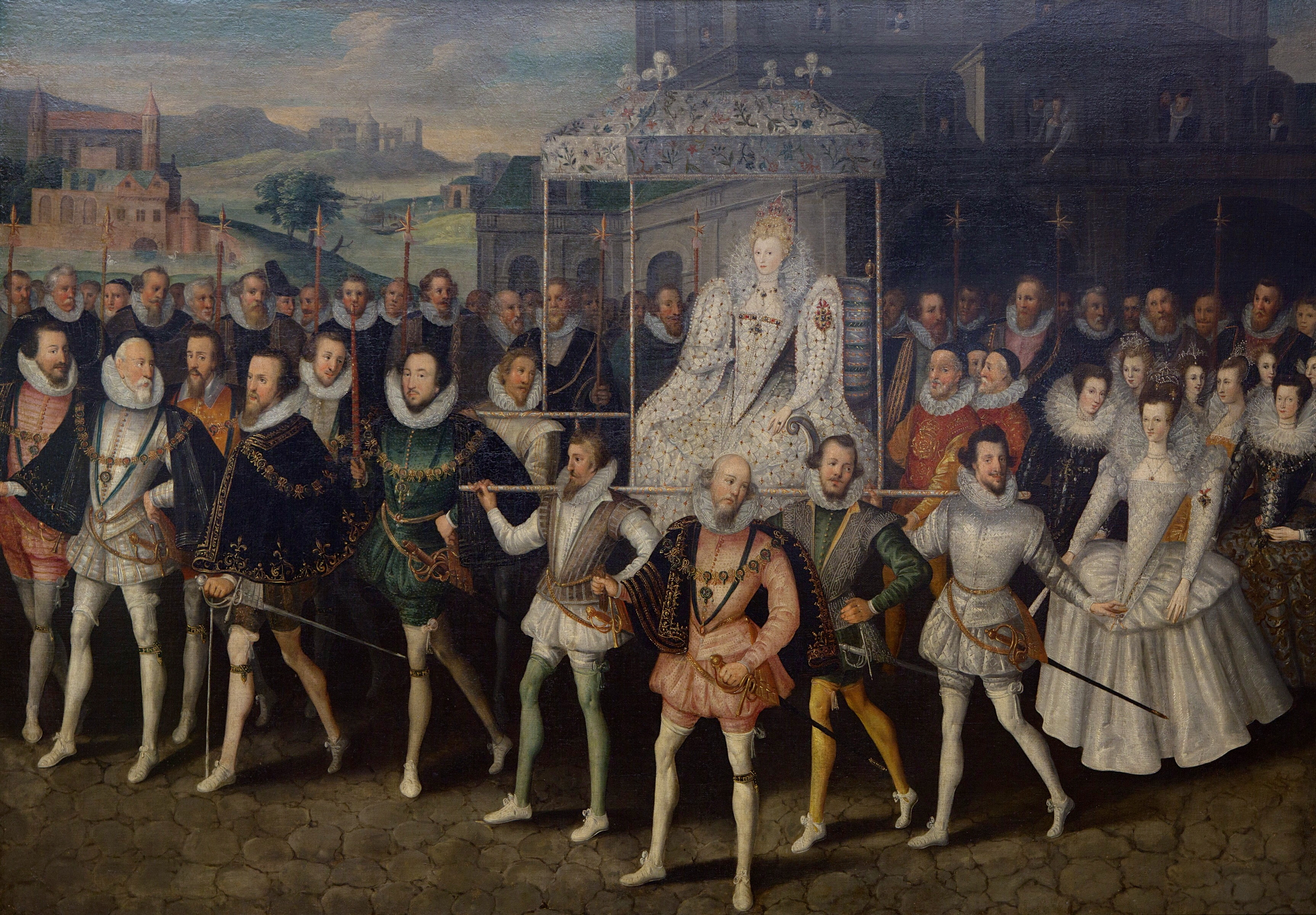 Ancient and hierarchical, spectacle elicits only the most general forms of consent and appeals to the most universal motivations and emotions. Modern species of visual persuasion, born from new types of media and new theories of politics, are more granular and egalitarian. They address more specific audiences, evoke a wider range of emotions, assume greater equality between audience and influencer, and shape perceptions of particular individuals, policies, or ideas. Rather than inspiring or coercing political unity, they often fuel factionalism and dissent.
Ancient and hierarchical, spectacle elicits only the most general forms of consent and appeals to the most universal motivations and emotions. Modern species of visual persuasion, born from new types of media and new theories of politics, are more granular and egalitarian. They address more specific audiences, evoke a wider range of emotions, assume greater equality between audience and influencer, and shape perceptions of particular individuals, policies, or ideas. Rather than inspiring or coercing political unity, they often fuel factionalism and dissent.
Take satirical illustrations, one of the earliest and most enduring products of printing. From Reformation woodcuts portraying the pope as Antichrist to the latest caricatures of Barack Obama or Tea Party sympathizers, this form of visual rhetoric ridicules, ostracizes, mocks, and sometimes dehumanizes the opposition. Even at its gentlest, it intensifies divisions, if only by flattering those who share the creator’s political commitments and sense of the absurd.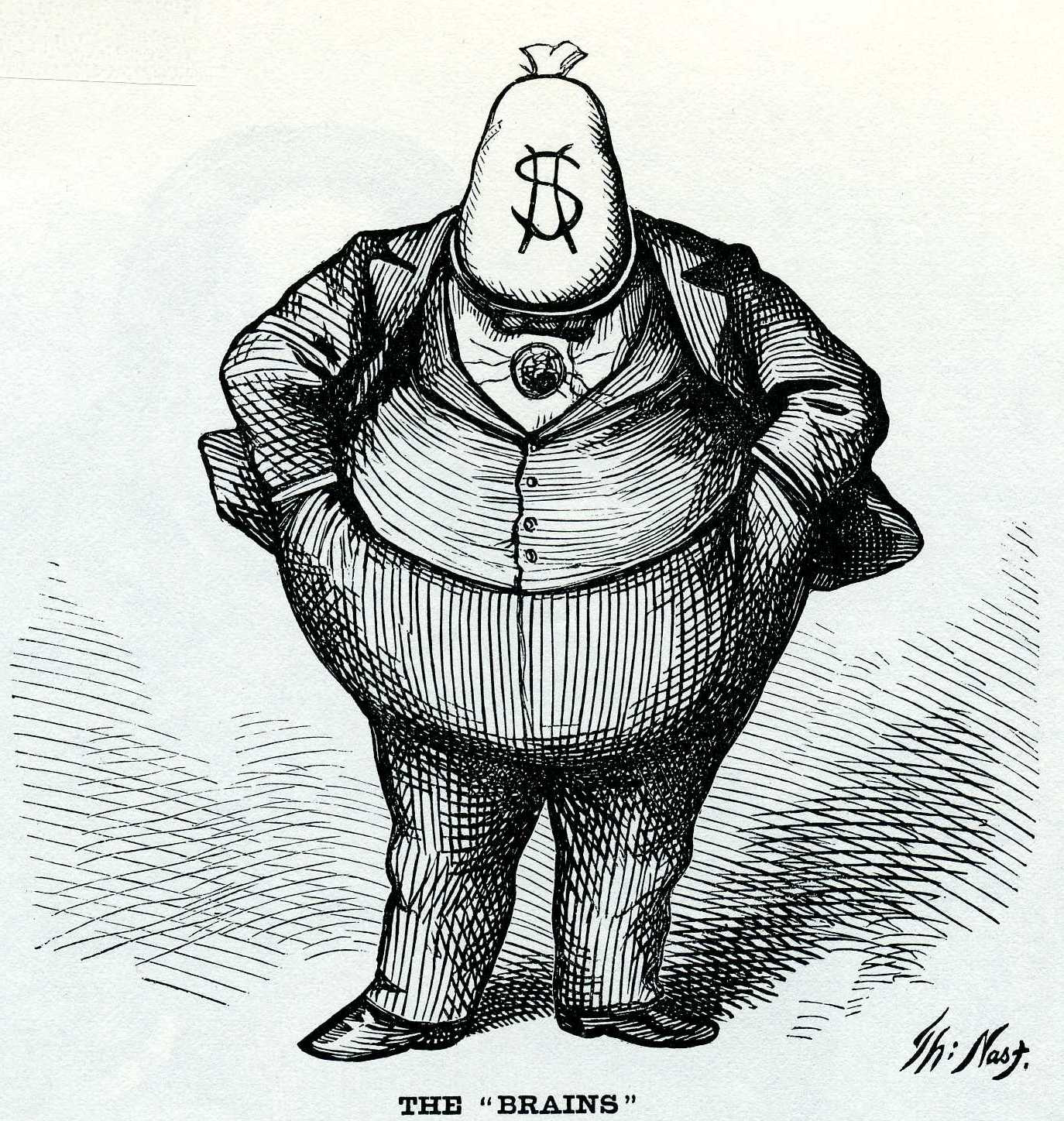 Satirical cartoons persuade not by changing minds but by reinforcing existing commitments and identities. They rally the troops. Those who disagree find them unconvincing, unfunny, and unfair—added proof that their opponents are just as bad as expected. Visual satire works because creator and audience share common attitudes and beliefs.
Satirical cartoons persuade not by changing minds but by reinforcing existing commitments and identities. They rally the troops. Those who disagree find them unconvincing, unfunny, and unfair—added proof that their opponents are just as bad as expected. Visual satire works because creator and audience share common attitudes and beliefs.
In all its modern forms, visual persuasion requires more than artistry. It demands an understanding of the audience. When Life magazine debuted with Margaret Bourke-White’s photo of Fort Peck Dam on its cover, the editors could assume that readers would see a thrilling example of progress, not a waste of taxpayer money, an environmental crime, or a boring bunch of cement. The Farm Services Administration photographers documenting poverty in the Great Depression anticipated that their audience would view subjects like Dorothea Lange’s Migrant Mother with sympathy rather than contempt and would believe that their plight could be eased by New Deal policies. When White House photographer Pete Souza recently tweeted his shot of Obama pointing over the sneeze guard, he presumably expected the audience to perceive a man of the people doing a charmingly normal thing, not an imperious chief executive breaking the rules. Oops.
The great mistake we make when considering political imagery, especially photography, is to assume visuals simply reflect is—a mechanically accurate representation of the world—when they in fact embody ought—an emotional sense of how things should or shouldn’t be. “All picturing is rhetoric,” declares advertising scholar Linda Scott. She’s right. Even an unaltered, mechanically objective photograph represents a bounded and flattened version of reality. Every image is selective. It requires context and judgment to interpret, and that interpretation is infused with emotion and cultural meaning.
The match between audience and image is especially critical for one of the most influential yet least examined forms of visual political rhetoric: glamour. In current everyday usage, the term glamour has become nearly synonymous with fashion, losing even its long-established connections with travel, cinema, and interior design. But we need only think of the terms glamorous and glamorize to realize that glamour is about much more than clothes.
Glamour is a form of communication that, like humor, arouses a distinctive emotion in the audience and takes many different forms, depending on personality and cultural context. While humor generates amusement, glamour produces a pang of projection and longing. When we find something glamorous, we get the feeling of “if only”: If only I could wear those clothes, belong to that group, drive that car, win that prize, have that job, be (or be with) that person, if only life could be like that.  Glamour translates inchoate desires—for love, wealth, power, beauty, sex appeal, adulation, respect, friendship, fame, adventure, freedom, or significance—into specific images and ideas, offering a lucid glimpse of desire fulfilled. It makes us feel that the life we dream of is possible, and to want it even more.
Glamour translates inchoate desires—for love, wealth, power, beauty, sex appeal, adulation, respect, friendship, fame, adventure, freedom, or significance—into specific images and ideas, offering a lucid glimpse of desire fulfilled. It makes us feel that the life we dream of is possible, and to want it even more.
In the early years of the civil rights movement, the sociologist E. Franklin Frazier excoriated Ebony for creating a glamorous “world of make-believe” with its profiles of wealthy, famous, influential, and highly atypical black figures. Frazier was correct that the journalism was selective, but he was wrong about how glamour works. He assumed it would encourage complacency, when in fact it fuels discontent. Glamour intensifies longings by giving them specific form. Ebony proved a potent political instrument.
With its promise of a different, better life in different, better circumstances, glamour is as useful in political persuasion as it is in commercial advertising. It is all about hope and change. 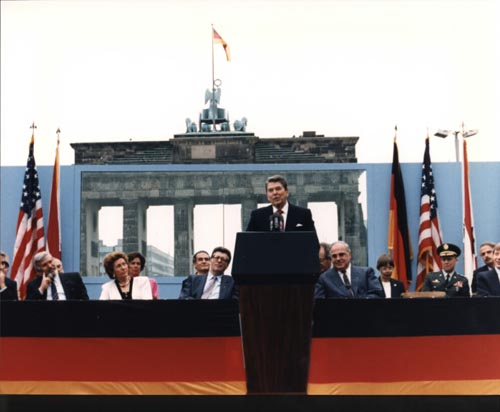 Although we commonly associate political glamour with public figures, notably John F. Kennedy, as visual persuasion it is better suited to policies and ideas than to politicians. Glamour requires mystery, which the intense scrutiny and populist expectations of contemporary campaigns tend to destroy. (Obama’s 2008 glamour was an exception.) A not-yet-adopted policy or a utopian ideal shimmers alluringly in the distance, its difficulties and costs concealed.
Although we commonly associate political glamour with public figures, notably John F. Kennedy, as visual persuasion it is better suited to policies and ideas than to politicians. Glamour requires mystery, which the intense scrutiny and populist expectations of contemporary campaigns tend to destroy. (Obama’s 2008 glamour was an exception.) A not-yet-adopted policy or a utopian ideal shimmers alluringly in the distance, its difficulties and costs concealed.
In the 20th century, glamour sold the idealized garden cities and limited-access highways that established a new norm of urban planning and suburban living. Its visual rhetoric made the technological future of spaceflight and miracle fibers alluring and taught the “modern woman” she could combine liberation and love. Glamour encouraged working-class aspirations. “When we went to the cinema and [saw] people switching lights on and opening fridges and hoovering, it was a different world,” a British woman recalled decades later. “I think it made us all a bit more ambitious.”
Glamorous political and commercial imagery—and their awkward but compelling coexistence in World’s Fair exhibits, such as General Motors’ famous 1939 Futurama—promoted the ideal of rational planning. “A perfectly ordered mechanical civilization” promised escape from the unpredictable, stressful, and seemingly haphazard developments that made modernity so unnerving. 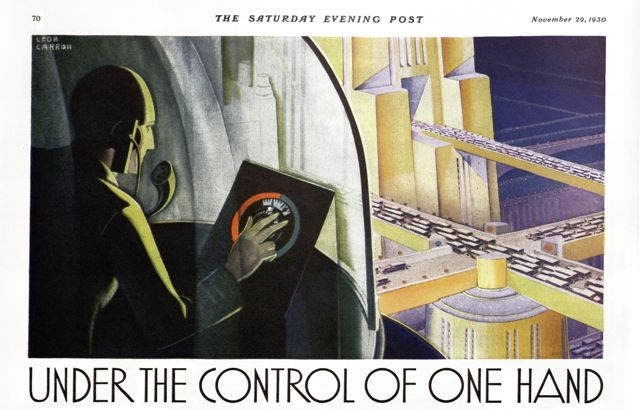 “Under the Control of One Hand” might have been an ad slogan pitching radios, but the idea and the illustration that expressed it were political.
“Under the Control of One Hand” might have been an ad slogan pitching radios, but the idea and the illustration that expressed it were political.
Such images worked because they channeled deep longings while disguising difficulties and flaws. Glamour is an illusion—the word originally meant a literal magic spell that made people see things that weren’t there—but that illusion tells the truth about desire. That combination makes glamour extremely aggravating for people who don’t share the same persuasive goals, whether they’re feminists condemning fashion ads, taxpayer groups fighting California’s high-speed rail, or E. Franklin Frazier demanding that the black bourgeoisie admit its “inferiority and inconsequence in American society.” How can anyone fall for this nonsense? It’s a scam, a trick, a delusion! It’s a lie!
Facing the persuasive power of glamour, political opponents have several possible strategies. They can try to argue with the underlying longings, as countless critics have tried to convince women not to care about being beautiful. And, like those countless critics, they will fail. People do not get argued into who they want to be.
Alternatively, opponents can try to puncture the illusion, revealing the flaws and difficulties hidden in the artificial grace.
Glamour is in fact fragile; experience more often than not will break the spell. (Obama’s glamour faded once he had to govern.) Political opponents just don’t want to wait for experience to take its course. They’re usually trying to head it off. So they need a contrary picture: realistic, horrific, or ridiculous. They can try to fill in the hidden details with the banal if unpleasant truth. They can suggest that glamour is hiding something truly awful. Or they can make the illusion look silly. With a tendency to backfire, horror is the most dangerous of these approaches; humor the most effective but difficult to pull off.
There is one other possibility. They can create their own version of glamour.
Confronting the allure of planning, in 1949 F.A. Hayek observed that “socialist thought owes its appeal to the young largely to its visionary character; the very courage to indulge in Utopian thought is in this respect a source of strength to the socialists which traditional liberalism sadly lacks.” Hayek’s popular 1944 book The Road to Serfdom countered the glamorous vision of planning with a combination of reality—here’s what would be required to get that to work—and horror (hence the title). But it did nothing to make free markets glamorous.
That task was accomplished in 1957, by an author who’d trained her visual imagination absorbing the movies of Hollywood’s Golden Age. Ayn Rand called her novels “romantic,” because they portrayed the world not as it was but as she believed it ought to be. Her works channeled her longings into characters, settings, and descriptions that made the ideal seem possible. It’s no accident that of all the 20th century’s proponents of libertarian ideas, she was the one who moved the most hearts and infuriated the most critics. She created glamorous pictures with words. She mastered visual persuasion.

Image courtesy of the California High-Speed Rail Authority.
Response Essays
Luxury, Glamour, and Power
Politics as logic is scrupulous and tough-minded. Nothing gets past the gatekeeper that is not scrutinized, tested, and proven. Politics as rhetoric on the other hand is handsome and charming, and it’s only later that we realize our wallet is missing.
This is our traditional understanding of the role of glamour in politics: it is the friend of trickery and the demagogue. Virginia Postrel goes straight at the usual logic vs. rhetoric distinction with a broader, more sophisticated view.
In point of fact, we can accept the truth of certain propositions, even worthy, noble ones, without being the least bit interested in embracing them. The trouble is these truths do not make the world more thinkable or habitable, and these conditions are for many political purposes the important ones. As Postrel puts it, “Logic does not make us long for prosperity, freedom, equality, or security.”
The digital community, and especially the gaming community, talks casually about “world building.” This makes the anthropological heart race, not least because the process of building a world is no simple matter at all. Indeed, that’s the mystery. How do we build a world that’s bigger and more lasting than a mere consensus among men and women?
A suspicion presents itself. Politics as logic, politics without rhetoric, is possible but underwhelming because finally it is incapable of eliciting the acts of belief and loyalty on which the state depends. Or to put this another way, all political agreements, however logical, are slender until substantiated. And substantiation is to some extent the work of rhetoric and, yes, glamour.
We sometimes wish it were otherwise. When Nancy Reagan spent $2 million on Lenox china for the White House, the temptation to object was strong. Surely, this was only china and serious minded people believe china can’t matter…and that if it does matter, something must be wrong with the republic. But china, especially because precious and delicate, helped make a presidency and a republic formidable where low and middle church predecessors had made them insubstantial
Tony Blair could use the theater of state so effectively that he could persuade even grumpy Brits to embrace a new idea of what Britain could be. No small accomplishment when most of the members of the body politic embraced cynicism as the fashion of the day.
Other politicians resort to other messages, sometimes even riding shirtless on horseback. Whew. Again, as outsiders we fail to grasp the builder or the built. But then, it’s not meant for us. (And glamour is perhaps not the mot juste here.)
As Postrel points out, logic talks at us whereas rhetoric speaks to us. Logic lectures. Rhetoric communicates. And this means glamour cannot work unless it resonates with the culture and context in place. Well, let’s not go too far. Glamour will not plead or wheedle. No, but it can bully, less democratic than monarchical. Consent? That’s nice, says glamour, but we prefer admiration and occasionally awe.
Ironically, glamour cannot achieve this arrogance unless it knows quite a lot about us and our deeper sense of the world. And this means it is obliged to learn things about us that logic treats as extraneous. Thus does glamour stoop to conquer, kneel to rise. Glamour is grand but wily, a dangerous combo.
It turns out glamour is not a reliable friend to power. It can be treacherous, willful, uncontrolled, removing desire from the service of the state and putting it in the hands of the dissident.
This makes glamour quite different from luxury. Oh, luxury. So obedient to the state. Slavish even. Luxury obeys the distribution of status. As Georg Simmel pointed out, it sets in train the imitation of the high-standing by the low-standing. It makes us want what our betters have, commandeering our aspirations, even our imaginations. Luxury takes an impression of power and preserves it faithfully.
Glamour, on the other hand, can be a rogue quantity. Here it defines itself against power. A suit may be obligatory uptown, but try wearing it to an event downtown: it draws sneers and, worse, giggles. Glamour in one community confesses cluelessness in another. This downtown glamour is designed to repudiate the language and logic of power, to help create an oppositional set of values. And we’re tempted to say this glamour is designed to console the marginal soul, to compensate for their marginality. But this is what people always say, especially when their world has been scorned.
The best example of rogue glamour is Beau Brummell, a man so powerful he dared make fun of the Prince Regent. (Encountering a friend with the prince in tow, Brummell asked, “Who’s your fat friend?”) Brummell was the most powerful man in London precisely because he understood glamour as no one else did. He had only to smile on someone’s fashion choices to elevate them in the social scheme of things. Strictly speaking this had been a monarchical function. You might say, “Oh, but Brummell was forgiven this breach because his abrogated power didn’t matter.” And you’d be wrong. Brummell helps us see that glamour is a staging area of the new as surely as luxury remains the sad little friend of privilege. It is a laboratory in which new social arrangements and cultural codes are proposed. Power rushes to certain kinds of novelty. The masters of glamour manage to get out ahead of the rest of us and occupy a future we are eager to join. Glamour makes a vacuum and this confers majesty, real or metaphorical, legitimate or pretending.
Claude Levi-Strauss identified science as a rogue element in Western, first-world societies, issuing messages unanticipated by the standing code, messages that must eventually run back into the code and transform it. Indeed, in the restless West several things play this role: technology, markets, immigration, innovation. Why are we so reluctant to see that glamour might do so too? There it is at the center of things, a constant, relatively tidy bouleversement that disrupts convention and conventional thinking.
The French geographer and historian Fernand Braudel asked,
Can it have been merely by coincidence that the future was to belong to societies fickle enough to care about changing the colors, materials, and shapes of costume, as well as the social order and the map of the world–societies, that is, which were ready to break with their traditions? There is a connection.[1]
There’s much to do to understand the rhetorical aspects of the state, and the way glamour helps fashion political understanding and consent. Let Virginia Postrel be our guide.
Note
[1] Braudel, Fernand. 1973. Capitalism and Material Life, 1400-1800. London: Weidenfeld and Nicolson, p. 323.
Smile, You Are on CNN!
You’ve heard the one about how Washington is Hollywood for ugly people, right? You may have also heard the less quippy but oft-repeated claim that were Abraham Lincoln to run for president today, he’d never be elected—too gangly, too hollow-cheeked, too…ugly. A variant on this latter assertion is a pointed retelling of the first televised presidential debate, in 1960: People who listened on the radio thought that Richard Nixon had bested his opponent, but those who watched it on television found John F. Kennedy to be the winner. The difference, of course, is supposed to have lain in Kennedy’s good looks, spotlighted even more than usual by an illness that left Nixon appearing gaunt and sickly the night of the debate.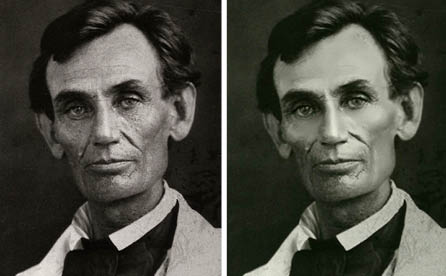
At first blush, these narratives seem to contradict the Hollywood-for-ugly-people maxim about politics. A closer look at whom we consider beautiful—and why we consider them such—shows that these two claims about the relationship between physical appeal and politics are less opposed than they appear.
When asked to describe an attractive person, many of us might conjure up an image of someone who looks extraordinary: the ethereal beauty of, say, Elizabeth Taylor, or the rugged yet sculpted features of George Clooney. Yet the more we learn about what the human eye finds appealing, the more we learn that what we find good-looking is not what is unique, but what is average. Case in point: Computer-generated composite faces are consistently rated as more alluring than actual, singular human faces. And faces that are considered highly attractive usually feature nothing more striking than average features that are just a shade exaggerated—lips a bit fuller, eyes a bit larger—as opposed to a truly unique feature like Taylor’s famed violet eyes. Even one of the most frequently quoted studies on beauty, about how babies’ eyes will linger longer on faces considered beautiful by adults, can be construed as an endorsement of the mean: In another study, babies focused longer on a series of dots and lines that resembled a face than they did on a formless arrangement of figures. One conclusion: Babies might like “beautiful” faces because they’re more facelike than the average face, not because of their straight-up aesthetic appeal.
As it happens, there’s a profession in which an exaggerated averageness lends a particular advantage. Candidates for public office climb over themselves to pose for photographs at local dining spots and bowling alleys, dandling babies all the while, in an effort to project an “everyman” (or, less often, everywoman) image. As Virginia Postrel reminded us, even Barack Obama recently made “news” by reaching over the sneeze guard at Chipotle, in a perhaps failed attempt to be average. Politicians stake their claim on averageness, and what better way of seeming average than to seem, if not beautiful, pretty? To be pleasantly pretty (or pleasantly nice-looking if the term pretty seems too feminine for the 78% to 92% of public office holders who are men) is to appear inherently average. You don’t even need to eat cinnamon buns at the local diner to do so.
I don’t want to suggest that we play “Hot or Not” with our elected officials—after all, they (ostensibly) didn’t sign up to have their looks evaluated along with their platforms. But in a leisurely stroll through the official websites of random state representatives, a certain kind of face makes a strong showing: one that resides in the liminal space between strict averageness and what we’d conceive of as beauty. Attractive enough, but attractive in a way that doesn’t call attention to itself. Washington might indeed be Hollywood for ugly people, if by “ugly” we mean the contrast between people whose job it is to entertain the crowd and those whose job it is to represent it. But to be actually ugly—as opposed to the pleasant faces that we see in news clips of the week’s political vaudeville—is to simply be the flipside of the extraordinary beauty of the Taylor-Clooney sort. That is, ugliness is remarkable, in contrast to the simple unremarkability of being nice-looking, à la any sampling of the House of Representatives. Those who fall too far outside the margins, whether it be the “Breck girl” narrative surrounding John Edwards, or someone with the face of Lincoln, can be more easily dismissed. It’s the median voter theorem, without all that policy mucking it up: Stick to the middle ground and you’ll come out ahead. And if that middle ground wears an attractive guise, all the better.
As Virginia Postrel argues on her essay on visual persuasion and the state, we rely upon the glamour of iconography to give form to our deepest desires; in turn, savvy strategists use that glamour as a form of persuasion. But beauty has always been a gentler form of manipulation than glamour. It seduces us not with a promise but with a blessing: Where glamour can be cruel, we only consider beauty cruel when it has left us, or once it’s tiptoed into the realm of glamour via iconography. Tolstoy wrote, “It is amazing how complete is the delusion that beauty is goodness”—indeed, that delusion extends to people’s tendency to endow good-looking folks with the “halo effect” of beauty, including politicians, assuming them to be more sympathetic than those whose looks are irregular.
When we consider the averageness inherent in everyday, run-of-the-mill beauty, it speaks not as much to delusion as it does to hope. If, as Tolstoy claimed, we associate beauty with goodness, our minds identify beauty in the pedestrian because of our longing to see goodness in the everyday—quite a contrast to the cynicism that currently marks much of the public relationship to statecraft.
Our gift at finding beauty in the ordinary speaks to the most plaintive of civic hopes: That those we democratically elect to be our representatives are exactly that—representatives, not leaders or officials or any of the other various words with which we christen the chosen. It’s easy to moan about the celebrity culture that gave birth to magazine features that showcase movie stars clutching grande lattés while grocery shopping, but underneath such fluff lies a simple wish to see ourselves represented publically. Politicians: They’re just like us. Beauty is often construed as something for the elite—something out of reach for the hoi polloi, as opposed to, well, “the beautiful people.” To believe that is to partly misconstrue beauty. In truth, beauty is populist to its core.
Image credit: Wikimedia Commons.
Glamour and the Vision of Legitimate Power
The digital age has meant the triumph of the image over the printed word. Consider the numbers. Some 100 hours of video are uploaded to YouTube every minute, and over 6 billion hours of video are watched on that platform every month – or about 685,000 years. Facebook is much more than a social network: it’s the largest repository of images in human history, holding 250 billion photos. The messaging service Snapchat has converted personal communication into a largely visual experience, with 700 million photos and videos “chatted” every day.
This torrent of imagery has been produced almost entirely by ordinary people wielding cell phone cameras. Government and industrial producers, once dominant in the field, have been swept aside. The effect has been to transfer vast persuasive power from established institutions into the hands of an unruly public. Visual media is compelling because it creates the illusion that we are looking out of a window at the real world. We react like witnesses, viscerally, suspending critical judgment. What we see will have a decisive impact on what we think: perverse photos out of Abu Ghraib Prison arguably caused greater harm to the American cause in Iraq than any battlefield defeat. Cell phone video of the death of Neda Agha-Soltan, a young woman shot by a government sniper in the streets of Tehran, exposed the violent foundations of the Iranian regime with greater clarity than words could muster.

Iran, 2009: The death of Neda Agha-Soltan
The power of images to shape opinion has long been recognized and turned to advantage by those in authority. Governments of every stripe have invested talent and treasure to create a concrete vision of themselves in the public’s mind: what we might call, following Virginia Postrel, the glamour of power. For Postrel, “Glamour translates inchoate desires…into specific images and ideas, offering a lucid glimpse of desire fulfilled.” That describes quite precisely the goal of visual propaganda. To a degree that is rarely acknowledged, rulers – individuals and institutions – depend for their survival on the authorizing magic of legitimacy, rather than brute force. Legitimacy, in turn, rests on abstractions: divine right, or the sovereignty of the people. Persuasive images embody these legitimizing abstractions. Ideals of authority are given shape and reality and even grace, offering a “lucid glimpse” of what power ought to be but rarely is.
From Rameses II to Louis XIV, official iconography emphasized the immense distance between the glamour of power and ordinary humanity. Rulers were god-kings or divinely anointed; the rest of us were mere mortals: once that was established, legitimacy followed naturally. The pharaonic temptation in art is not yet dead, but modern governments, which claim legitimacy from the people, are more likely to portray the irresistible strength of the whole nation – typically, of the nation at war. The five soldiers photographed while struggling to raise the flag over the rubble of Mount Suribachi embodied the valor and determination necessary for an American victory over Japan. This image has served the U.S. government well. Used to sell war bonds and as the model for the Marine Memorial, it represented a grittier, more accessible style of glamour. That a Soviet photographer repeated the same visual elements with equal success shows that images, like text, persuade according to a structured rhetoric.
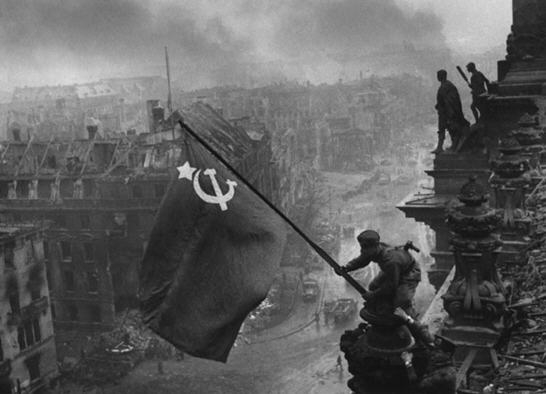
Berlin, 1945: Red flag over the Reichstag
Images bestow legitimacy because they are embedded in justifying stories. Just as depictions of the Crucifixion would be incomprehensible without knowledge of the Gospels, official imagery would appear trivial or puzzling in the absence of narratives that transform that faceless monster, the state, into a glamorous teacher, provider, consoler. Winning the battle of visual narratives can trump success in actual combat. In 2006, the Israeli military inflicted severe punishment on Hezbollah, but a brilliant visual campaign conducted by Hezbollah framed the conflict entirely in terms of Israeli aggression slaughtering innocent Lebanese civilians. Today, the 2006 war is remembered as a Hezbollah victory, even in Israel.

Beirut, 2006: Tough toys, or props in anti-Israel visual rhetoric?
If government control of visual media engenders legitimacy, then the cell phone must be considered the most subversive device ever invented – and we should expect the digital revolution to usher in a period of great political turbulence. Persuasive images have played a decisive part in the serial uprisings in the Middle East. None was more powerful than the first: that of the Tunisian street vendor, Mohamed Bouazizi, burning like a human torch to protest his humiliation at the hands of the regime. This image of a man driven by his rulers beyond the last measure of despair became the emblem of rebellion in the Arab world. A similar effect was created by photos of Khaled Said, a 28-year-old Egyptian beaten to death by agents of the Hosni Mubarak regime. The contrast between the handsome young Khaled alive and his appearance in death shocked the Egyptian public, and inspired a Facebook page, “We Are All Khaled Said,” in which the anti-Mubarak protests were first planned. A stream of viral videos from the Syrian uprising conveyed the immense size of opposition crowds, then the funerals of regime victims, and finally the descent into chaos that opened the gates to ISIS and other political monstrosities.

Syria, 2011: The world turned upside down
The public’s use of imagery represents a revolt against the distancing glamour of power – and a glamorization of revolt. Visual rhetoric feeds on negation. A YouTube video is a clumsy medium for parsing out political alternatives, but a powerful way to dramatize government brutality, corruption, and failure. The digital age thus often seems afflicted with a peculiar strain of nihilism. Battered by a blizzard of contradictory pictures, the stories that justify the ruling institutions have lost their hold on ordinary people. Trust in government has vanished, in democracies no less than authoritarian countries. Against this entropy of the system, a public that communicates visually has shown little interest in reform, and stands in danger of succumbing to the allure of perpetual discontent and the dark glamour of desolation.

Ukraine, 2014: The seductive glamour of revolt
The Conversation
Unseemly Luxuries
Upon reading Grant McCracken’s essay on luxury versus glamour, my thoughts turned to the visibility—or invisibility, as it were—of luxury in relation to the state. Luxury may be a political tool in its promises to the people, but it’s a lousy one when it comes to its use for leaders.
Inconspicuous consumption—an inversion of Thorstein Veblen’s theory of conspicuous consumption, which notes that the well-off will spend on lavish goods as a public demonstration of wealth—has it that the truly wealthy will invest in less-visible goods (such as travel and education) and that it’s actually the strivers who will spend more on things like expensive cars, jewelry, and clothing. Part of this may be because people who have less “deep” wealth feel a need to prove that they have a place at the table of the fabulous, but the other part of the equation is a desire among the affluent to avoid seeming…well, tacky. That is: Among a certain set, white after Labor Day is to 1960 as bling is to today.
To be sure, wealth is still displayed in ways both conspicuous and not-so. But the relationship between the state and inconspicuous consumption shows a continued unease about exactly how much luxury governments should sanction. Russia introduced something akin to a luxury tax in 2012; China considered lowering theirs, then wound up looking toward the opposite direction. Closer to home, New York State had what amounted to a luxury tax on clothing above $110, then applied the tax to all clothing, then raised the luxury bar again, while New York City taxes kept to the $110 rule all along—oh, and don’t forget about the erstwhile “no-tax week,” which once saw high-end outlets across the city suddenly advertising temporary tax exemptions in store windows.
Growing awareness of income inequality in the United States is contributing to the “unseemliness” of conspicuous consumption—and, more importantly, to how we’re seen abroad. America, in order to hold its reputation in the global order as the country you can come to and make it big if you just try hard enough, has to promote an image that involves a degree of conspicuous consumption. But that image mustn’t tip over the line, lest we reinforce the idea of America as a hotbed of materialistic selfishness where McMansions line the streets of one neighborhood while bodies of the indigent line another. (And as a place where the conspicuous consumption of yore has contributed to the environmental crisis, leaving modest little Priuses and such in a position to become one of the ultimate markers of inconspicuous consumption.) So imagemakers are left constantly straddling an invisible line, one that’s hard to detect until it’s been crossed in a manner deemed inappropriate by the public.
It’s no accident that so many examples of this sort of line-crossing revolve around personal appearance, particularly as it relates to campaign spending. See: the much-discussed $4,700 tab for Michele Bachmann’s makeup artist, or even the paltry $300 sum from Mitt Romney’s campaign for “grooming services.” As I argued in my earlier essay, we seek legislators who resemble us on the scale of human attractiveness—that is, we seek the average. But into that calculated averageness comes things like makeup artistry and grooming (including, yes, the highly publicized spending on John Edwards’s “Breck girl” haircuts). We want the work that goes into personal attractiveness to be invisible; we want it to be something that just happens instead of something that’s sought. It’s equivalent to inconspicuous consumption. Look good, but don’t let on what it cost you.
Which brings us back to the question of glamour. As Postrel writes in her book The Power of Glamour, glamour is often confused with the opulence of luxury, and as McCracken illustrates with the example of a (non-ironic) suit-wearer venturing into hipster downtown, the two are quite different. Inconspicuous consumption—which, in its own way, is conspicuous in its supposed modesty—can function as a delineation between luxury and glamour. If it reeks of money, it’s probably a luxury, but depending on how conspicuously you wish to consume, it might well project the opposite of glamour.
At the same time, the ways inconspicuous consumption manifests itself show us that quiet luxuries project a glamour all their own. The Prius comes to mind here, as do social media vacations, caterers in jeans and ponytails, and every “shabby chic” housewares collection ever designed. As for the understated glamour of the state, we only need to take a look at the Oval Office itself. A space that’s always had to balance grandeur with just a hint of austerity, the world’s most famous office has seen red rugs (Kennedy and Nixon), eagle valances (Taft through Roosevelt) to all manners of gold (Ford’s curtains, Reagan’s rug, Clinton’s drapes). But the color scheme of the president to take office during the greatest recession in recent memory? Beige.
Glamour and Sprezzatura
In her reply to Virginia Postrel, Autumn Whitefield-Madrano writes, “We want the work that goes into personal attractiveness to be invisible; we want it to be something that just happens instead of something that’s sought. It’s equivalent to inconspicuous consumption. Look good, but don’t let on what it cost you.”
This is what we want, and that’s why Baldassare Castiglione created the idea of sprezzatura. Narrowly, this is the art of concealing art with art. More broadly, it’s the notion that the self and the surfaces presented for public scrutiny should look effortless and unstudied.
Sprezzatura is behind the code of old money on both sides of the Atlantic. And of course, it rather spoils the fun. I mean, you work really hard, and you rise in the world, and the person who greets you at the gate called “real wealth and standing” is a shabby-looking man who asks you to take off the bling and to turn all other status messages down to “3” and possibly “2.” I mean, what was the point of making a bucketload of money if not to bask in everyone’s admiration, and how is that going to happen if we are obliged to forgo making a spectacle of ourselves? Huh? And just what’s wrong with “11,” anyway?
But there it is. It turns out luxury is not allowed to be fully luxurious, and that’s where glamour comes in. Cause, honey, glamour lets it rip. Glamour demands a certain control and discipline in the making, but finally what it’s after in the observer is shock and awe. Glamour wants us to surrender our faculties and blink with astonishment.
Glamour means to commandeer our attention. Once while walking with Steve and Virginia Postrel in public somewhere in Dallas or LA, I remember people stopping simply to stare at Virginia’s clothing. I think especially it was her skirt. It was that glamorous. They were in fact being a little rude, but witlessly so, because their attention was coerced. Better, this was involuntary admiration. So the accusation of rudeness was softened.
Glamor has a way of forcing a violation of the rules of everyday life. Normally we don’t stare. But glamour when it summons its most terrible powers makes us stare.
At the limit, glamour confronts us with the sublime. As Kant described,
…the high waterfall of some night river, and the like, [noting these] make our power of resistance of trifling moment in comparison with their might. But, provided our own position is secure, their aspect is all the more attractive for its fearfulness; and we readily call these objects sublime, because they raise the forces of the soul above the height of vulgar commonplace, and discover within us a power of resistance of quite another kind, which gives us courage to be able to measure ourselves against the seeming omnipotence of nature.
The sublime can explode our categories of perception, overwhelm our sense of scale, test our powers of comprehension. Glamour goes all the way to 11.
References
Aldrich, Jr. Nelson W. 1988. Old Money: The Mythology of America’s Upper Class. New York: Vintage.
Castiglione, Baldassarre. 1967. The Book of the Courtier from the Italian, Done into English by Sir Thomas Hoby, Anno 1561, with an Introd. by Walter Raleigh. New York: AMS Press.
Kant, Immanuel. 1952. The Critique of Judgement. translator James Creed Meredith. Oxford: Clarendon Press, pp. 110-111.
Political Victory Punctures Illusions
Grant McCracken errs when he writes that “Glamour will not plead or wheedle. No, but it can bully, less democratic than monarchical.” He’s right about not pleading or wheedling, but bullying partakes of the same unglamorous neediness. Glamour projects the opposite of the pleading, wheedling, or bullying that begs for attention. It feels self-sufficient. Neither is glamour about striking awe. That’s the stuff of spectacle and magnificence. Glamour is seductive and intriguing, requiring grace and mystery. It offers the illusion of effortlessness, with room for fantasy and projection.
Most important, glamour does not exist apart from its audience. It is not a style. Glamour arises only when we see our ideal, longed-for selves in the other. “It wasn’t Ginger Rogers dancing with Fred Astaire, it was me,” said a woman recalling her teenage filmgoing in the 1930s and 40s. Another explained that she liked the era’s glamorous movie stars “because I could put myself in their place for a short while and become everything I wasn’t—beautiful, desirable and popular with the opposite sex.”[1]
Glamour transports us into a setting or identity in which we feel our yearnings realized. We imagine a different, better life in different, better circumstances. “Wouldn’t it be perfect to be here?” suggests the resort ad showing a couple looking across their infinity pool toward the even bluer ocean. Glamour is about aspiration. It implies change, making us feel that our desires are achievable and that we are not stuck with the life we have. A glamorous person, setting, artifact, or idea represents neither ordinary life nor unattainable status but, rather, an imaginative bridge between the actual and the ideal. As political rhetoric, then, glamour is neither monarchical nor populist but something more idealistic and complicated.
Elected officials are rarely glamorous, just as they are rarely extraordinarily beautiful, as Autumn Whitefield-Madrano rightly observes. Democratic politics generally rewards what she calls “an exaggerated averageness” and what I’ve referred to, usually when answering questions about Michelle Obama, as “an extraordinary version of an ordinary person.” (In the 2008 campaign, Mrs. Obama’s down-to-earth qualities and familiar personal background provided a reassuring counterweight to her husband’s exoticism and glamour.) We want our representatives to be a little better than we are, but not too much. Besides, democratic politics cannot abide mystery—today’s watchword is “transparency,” while glamour demands translucence—and opposition research inevitably uncovers flaws.
Glamour in politics therefore appears less often in individuals than in causes and ideas. Some political movements offer a version of the same glamour that draws people to the latest hot restaurant, to Harvard, or to the U.S. Marine Corps: the allure of belonging to an elite. You may sincerely want to convert the world, but the glamour of your cause derives in part from its exclusivity. You’re the vanguard of the revolution, the true patriots, the smartest and most enlightened citizens, the last defenders of freedom. You’re important, special. You’re “saving the planet” or—that most glamorous of political phrases—“changing the world.” Exactly what the change will look like or how, in detail, it will be achieved is rarely specified. The vagueness encourages projection, making space for diverse, sometimes contradictory longings.
Political victory, then, is like meeting your idol or getting your dream job. It punctures the illusion, revealing the contradictions, difficulties, and flaws hidden in the glamorous idea of a world transformed. Those problems may be as mundane as dysfunctional health-insurance websites or stop-and-go freeway traffic. Or they may be as horrific as gulags and famine. Whatever the particulars, utopia never arrives. History doesn’t end. Neither does political conflict.
That’s the biggest disappointment. The most glamorous idea in modern politics is the notion of escaping from history and from politics itself—from imperfections, accidents, compromises, tradeoffs, and dissension. That escape was the promise of the twentieth century’s “high modernist” ideologies, with their disinterested experts and rational planning. A different version informs many libertarian imaginings. We will start from scratch somewhere, and we will get it right this time. But, as Stephen Toulmin wisely observed, “there is no scratch.”[2] And as anyone who has ever lived in a condo association or worked in a large organization, politics does not require the state, only human beings with incompatible goals. In politics, as in the rest of life, glamour can only be a guide, not a destination.
The Deadly Quest for Grace
The libertarian economist and syndicated columnist Walter Williams likes to describe the difference between voluntary market transactions and involuntary government requirements in simple terms. Market exchange, he says, is like seduction: “You make me feel good, and I’ll make you feel good.” Government action is like rape: “The essence of our relationship with government,” he says, “is that if we don’t make them feel good, they’re going to make us feel bad.” Democracy is no improvement. “I don’t think gang rape is any better than individualized rape,” he says. “Just because you vote to rape somebody doesn’t make it right,” he says.
This analogy goes over well with true believers. But most people won’t buy it. (I doubt most libertarians, in their heart of hearts, accept it either.) Few Americans think that paying taxes, registering the car, waiting in customs lines, or separating trash using mandatory recycling bins is anything like being raped. Lousy sex, maybe, but not rape. Even when the interaction is unwanted and unpleasant, most of us, most of the time feel we’ve given consent. The reason is what Martin Gurri calls “the authorizing magic of legitimacy.”
Glamour is another sort of magic, a trick in which the audience knowingly suspends disbelief. It’s an illusion “known to be false but felt to be true.”[1] Glamour presents an idealized picture, in which flaws, distractions, costs, and complications are hidden. Courtship and love are never as easy as a Fred and Ginger routine, a beach vacation never as unmarred by delays and difficulties as a travel brochure. Military comradeship is real, but the “glamour of battle” edits out the boredom and blood. Glamour, like legitimacy, survives only behind a “well-wrought veil” that reveals only partial truths.[2]
The years I spent thinking about glamour made me appreciate—against both my psychological inclinations and our professed social norms—the cultural and personal value of such inspirational illusions. Glamour can be used for evil but in its benign incarnations it gives direction and meaning to our personal projects and often creates social benefits. Following Adam Smith, I’ve even suggested that economic prosperity depends on illusions.
Glamour’s greatest dangers, I’ve argued, lie in forgetting what is left out and demanding that the real world conform to the image. “Without a backstage, the quest for grace threatens to turn tyrannical, subordinating the complexities and flux of life to a unitary and artificial ideal,” I write in The Power of Glamour.
All utopias, whether hateful or benevolent, trade in glamour. As literature, they offer only a graceful setting—no narrative, no conflict, no depth of character, no change. They edit out the dynamism and complexity of social interactions to compose a static image of the ideal. As philosophical thought experiments, utopias can be illuminating. As political programs, they are at best impractical. At the extreme, they become deadly, as the quest for grace becomes a demand for purity, with no room for anything or anyone that might disrupt the guiding vision—whether religious dissenters or ethnic minorities, competitive markets or artistic innovation, scientific discoveries or contradictory ideologies. Perfect grace cannot tolerate the unpredictability and diversity of real human beings.
In his response essay and his important new book The Revolt of the Public and the Crisis of Authority in the New Millennium, however, Gurri suggests a different danger: nihilistic rage arising from disillusionment. We hate our political representatives for the same reason we identify with them: because they are imperfect human beings who cannot deliver the mutually inconsistent, and sometimes flatly impossible, goods for which the public longs. We despise the system that fails to fulfill promises of effortless happiness and harmony.
The result, Gurri warns, is a dangerous and increasingly popular version of political glamour: the “glamorization of revolt,” with no consideration for what follows. The contemporary nihilist, he writes in his book,
is morbidly, monstrously, against. He imagines he would be happy, if the society in which he lives were wiped out tomorrow….His political and economic expectations are commensurate with his personal fantasies and desires, and the latter are boundless. He expects perfection. He insists on utopia….Every encounter with the human condition, every social imperfection and government failure, triggers the urge to demolish. Fortified by the conviction that he deserves more, he feels unconquerably righteous in his ingratitude—a feeling sometimes validated by late modernist governments bent on the promotion of universal happiness.
The problem is not that contemporary life is bad but that it is not perfect. It doesn’t conform to the glamorous ideal. And so the institutions that support it must be destroyed.
I am reminded of the peculiar state of many of America’s affluent, well-educated young women. They live in a culture that recognizes the widest range of beauty standards—body type, facial structure, skin color, et cetera—in the history of the world. They are free from the disease and deprivation that marred the faces and figures of their foremothers. They have access to the most effective beauty technologies ever invented. Most important, they have the greatest opportunities in the history of womankind for successful lives not based on their appearance.
But they do not rejoice in their good fortune. They do not highlight their best features and play down their flaws, as women were taught in the heyday of movie glamour. Nor do they ignore their appearance to develop less superficial qualities. Instead they rail. They rage. They wallow in the misery of their imperfections. Not just teenagers but grown women with independent careers and supposedly serious minds support a journalistic industry dedicated to complaining that they feel bad about their looks. They demand universal beauty, a component, presumably, of the modernist promise of universal happiness. Here, too, the problem is not that life is bad but that it is not perfect.
The nihilistic glamorization of revolt is indeed dangerous, and I certainly have no easy answer to it. But as I contemplate the parallels between Gurri’s political nihilists and the perpetually enraged readers of Jezebel it occurs to me that a widespread understanding of glamour might teach us to live more easily with the tension between aspirational ideals and real-world achievement—to recognize and accept what glamour conceals without losing the insights and inspiration it supplies.
[1] A phrase I take from Colin Campbell, The Romantic Ethic and the Spirit of Modern Consumerism (Oxford: Basil Blackwell, 1987). For a fuller discussion of its application, see chapter two of The Power of Glamour.
[2] For a discussion of Burke’s use of transparency versus veiling, see Jerry Z. Muller, Conservatism: An Anthology of Social and Political Thought from David Hume to the Present (Princeton: Princeton University Press, 1997) pp. 20–21, 80–82.
The Use and Abuse of Visual Persuasion
Virginia Postrel accurately summarizes the charges brought by critics against the use of visual persuasion in politics. Images, the iconoclasts maintain, are irrational. They leave no place for argument or evidence, but instead appeal to visceral fears and prejudices through the use of stereotypes. Recall the infamous “Daisy” ad produced by Lyndon Johnson’s reelection campaign: the image of an innocent young girl plucking a flower was succeeded by that of a nuclear blast. “Daisy” made its point with LBJ-like aggressiveness, but it outraged the purists. It was aired only once.
“Persuasive images are dangerous,” Postrel asserts, correctly. We are hard-wired to confuse them with truth, and to respond emotionally. Often, we are not aware that we are being manipulated. I once witnessed an experiment in “neuromarketing,” in which a young woman’s brain activity was monitored while she watched a series of images. At times, the emotional centers of her brain would light up like a fireworks display – but when we asked about this reaction, she stoutly denied having experienced strong feelings.
The greatest danger, however, is ignorance. We have come to understand the persuasive power of images. One would think that it would be part of our education as citizens of a democracy to attain visual literacy: to master the elements of the rhetoric of images. In fact, our schooling strives entirely in the opposite direction. We are a people of the Word. From the moment we learn to read and write, we are rewarded or criticized according to how cunningly we craft school papers and essays, post-graduate dissertations, reports and memorandums at the office, speeches and presentations at conferences, studies for professional journals, policy statements on behalf of government, State of the Union addresses to the electorate.
We have been trained in textual rhetoric. We can easily discern attempts to manipulate us verbally. The image falls beneath notice – intellectually, beneath contempt. As a result, our messages are often contradictory: the Word makes its argument, which the Image will refute.
Government seems particularly prone to this malady. Take, for example, Barack Obama’s 2009 Cairo speech aimed at Arab and Muslim audiences. Seeking to break with the policies of his predecessor, President Obama used the speech to mark a “new beginning,” based on a relationship of “mutual respect” and a “sustained effort… to find common ground” between the United States and the Muslim world. That was the text. What the world saw was an enormous and ornate auditorium – the Major Events Hall of Cairo University – where a powerful man, the president of the United States, stood above and apart on the stage, behind a lectern emblazoned with the shield of his office, surrounded by a splash of red curtains, flower arrangements, and elegantly draped flags. Barack Obama looked like what he was: a mighty ruler. The audience applauded on cue from far away. Visually, there was no common ground. The new beginning proposed by the president’s words was buried under the distancing icons of power.
Yet, as I have suggested, all human ideals must be embodied in imagery to achieve a living presence. That was as true of the medieval church and the Renaissance hero as it is of our American ideals like freedom and equality. There is nothing shoddy or manipulative in wishing to infuse our values with visible life, nothing shameful in educating ourselves against image-wielding tricksters who want our money or our votes. And sometimes, as a country, we have gotten it right: the Lincoln Memorial in Washington is a temple to the moving image and words of a man who made others free. Typically, however, the pictures we see of America come from Hollywood, whose practitioners are enormously skilled but uninterested in ideals or values. (Ronald Reagan, a rare Hollywood product with deeply held views, was by a long stretch our most brilliantly visual president: his speeches tended to be reinforced by potent symbolic settings, and his “Morning in America” campaign ad was probably the most effective deployment of persuasive images in modern American politics.)
Visual literacy isn’t rocket science, but it does require systematic observation and a critical mind. Techniques are used to achieve desired effects. Herky-jerky cell phone camera video feels more authentic than slick advertisements, for example. Lighting, color, camera angle – these seemingly professional concerns can inspire comfort or unease, fear or anger. Specific content is selected: in essence, ripped out of its context. The famous photo of the South Vietnamese chief of police executing a helpless Viet Cong prisoner, an anti-war icon, omitted the massacre of civilians perpetrated by the communist guerillas. (This is also an example of the ambivalence of the image, and of its tendency to generate unintended consequences. Eddie Adams, who won a Pulitzer Prize for the photo, considered the police chief “a hero.”) Techniques and content must be shaped toward some persuasive theme. As wielded by political actors, these themes have been remarkably limited in number: victimization, demonization, resistance and struggle, leader glorification or denigration are common examples.
It is important to consider the intended audience: images one group finds ridiculous can be powerfully persuasive to another. Talking heads C-SPAN-style appeal to few viewers under 60. Rap and hip hop are the natural background music of rebellious young people from New York City to Palestine. Literacy entails understanding who is a target of visual influence, no less than how that influence has been contrived.
Progress has been made. In an effort I was fortunate enough to participate in, the U.S. government, working with private sector experts, designed a methodology to “decode” persuasive geopolitical images and video. But application has been spotty. If, as Postrel insists, images are dangerous, there should be no debate about devising ways to observe and measure their impact. Yet discussion of this subject has been restricted to a few perceptive corners of the public sphere. So long as our elites in government, media, and education remain a devout people of the Word, the goal of achieving visual literacy will encounter resistance and worse: neglect.
The Glamour of the Therapeutic Narrative
In her latest post in this month’s conversation, Virginia Postrel points out that glamour’s greatest danger lies in the gap between the illusions it presents and the imperfect realities of life. One example she uses is of the dissatisfied young women—embodied by “perpetually enraged readers of Jezebel”—who rage at the gap between the illusion of conventional feminine beauty and their own flawed looks.
I’ll add a suggestion to the mix here: These women may well be reveling in a different sort of glamour, or rather, in one of glamour’s cousins. Narrative, at first glance, would seem to be what glamour is not—an arc, not a moment; a story, not a frame. But when a culture collects a narrative en masse, it adopts some of glamour’s sheen, and when a person’s lived experience fails to conform to the narrative at hand, the gap between the promise and reality can be just as maddening.
The conversation about women and beauty has taken on a narrative. Specifically, it’s conformed to a “therapeutic narrative”: a story in which a hero—or heroine, as it were—overcomes anguish in order to reach a place of understanding, perhaps even self-actualization. Central to the therapeutic narrative is the initial injury—in this case, ideal feminine beauty, and the failure of virtually every woman on the planet to embody it to the maximum. At the happy resolution of this narrative (there is no other kind of resolution to this narrative), we see the glamour of rebellion: the “kick-ass” woman who “lives by her own rules” and claims to reject the conventional beauty ideal. Ten years ago, she might have forwarded (long-debunked) memes about how Marilyn Monroe wore a size 16; today, she might post makeup-free selfies or post before-and-afters about magazine retouching on her Facebook wall. (Hell, she might run a blog entirely devoted to the sociology of beauty, comme moi.) Need I spell out that this warrior is as much a myth as that of the effortless beauty? But because its promise lies in eschewing a more obvious glamour, it’s seen as more attainable.
We know the therapeutic narrative has been glamourized because it has been picked up by at least one Fortune 500 company, with Unilever brand Dove embarking upon the decade-long “Campaign for Real Beauty.” It is, of course, a campaign for Dove, not for beauty of any sort, but its branches do a tremendous job of tapping into the vulnerabilities that saw this brand of narrative ensconced in the first place. Its 2004 breakout ad campaign featured billboards of “real women”—that is, women with full thighs or knock knees or curved bellies—in their underwear alongside the Dove logo. More recently, the company produced a commercial with a forensic sketch artist who drew women as they described themselves, and then as how a stranger described them. Surprise: The portraits based on self-description were less attractive than the ones coming from someone else’s perspective. But Dove isn’t the only company capitalizing upon the therapeutic narrative: Bare Escentuals ran an entire campaign based on models’ personalities, casting models based on questionnaires without ever seeing what they looked like. BeneFit ran an “inner beauty challenge.” And outside the realm of makeup, Jezebel itself—owned by one of the most successful new media companies out there, Gawker Media—made its name upon the ethos espoused in its tagline: “Celebrity, Sex, Fashion for Women. Without Airbrushing.”
All this would seem, at first blush, to have little to do with the larger framework of this month’s discussion: visual persuasion and politics. But here we can look to the still-relevant truths behind what may well be the Old Testament of the “body positive” movement: The Beauty Myth, the brilliant best-selling 1990 book by Naomi Wolf. Today, the tome is usually discussed as though it were the primary tool of instruction for alerting women to the ways they are manipulated by the mainstream media—indeed, the world at large—to feel never quite pretty enough, never quite thin enough, never quite enough enough. This it may well be. But in truth it’s a book about politics: about women’s engagement with the world and participation in the public sphere, and how beauty work is ultimately a distraction from the larger goals of feminism.
This, unfortunately, has not changed, even as women’s participation in the public sphere (including politics) continues to grow. What has changed is that we’ve added a meaty addendum to that distraction: We’re distracted not only by the beauty imperative, but by the backlash against the beauty imperative and the supposedly empowered vision of womanhood it promises. We’re distracted by the glamour of the therapeutic narrative. This wouldn’t be a bad thing in the least if more women’s vision extended beyond that point. But too often, it doesn’t. Pointing out magazine retouching doesn’t do much good if we treat it as the end point, not as a portal to a sturdier version of empowerment.
Third-wave feminists—actually, young women in general—are often dismissed as self-absorbed or trivial. I don’t wish to add to that claim, as I know it to be selective as well as false. What I can say—and I am aware of a degree of hypocrisy on my part, given that I mostly write about women and physical appearance—is that in directing so much of the public conversation about women to be about airbrushing and skinny models and the like, many a young woman is cutting her own vision short. The “perpetually enraged readers of Jezebel” that Postrel raises an eyebrow toward indeed too often wind up yoking themselves to the promise of imagery more than their sisters who accept those images unblinkingly. We’re wise to be on guard against the falsities of magazine images and the like, yes. But the images we’re on guard against wind up siphoning women’s energies from the public sphere, armor or not.
